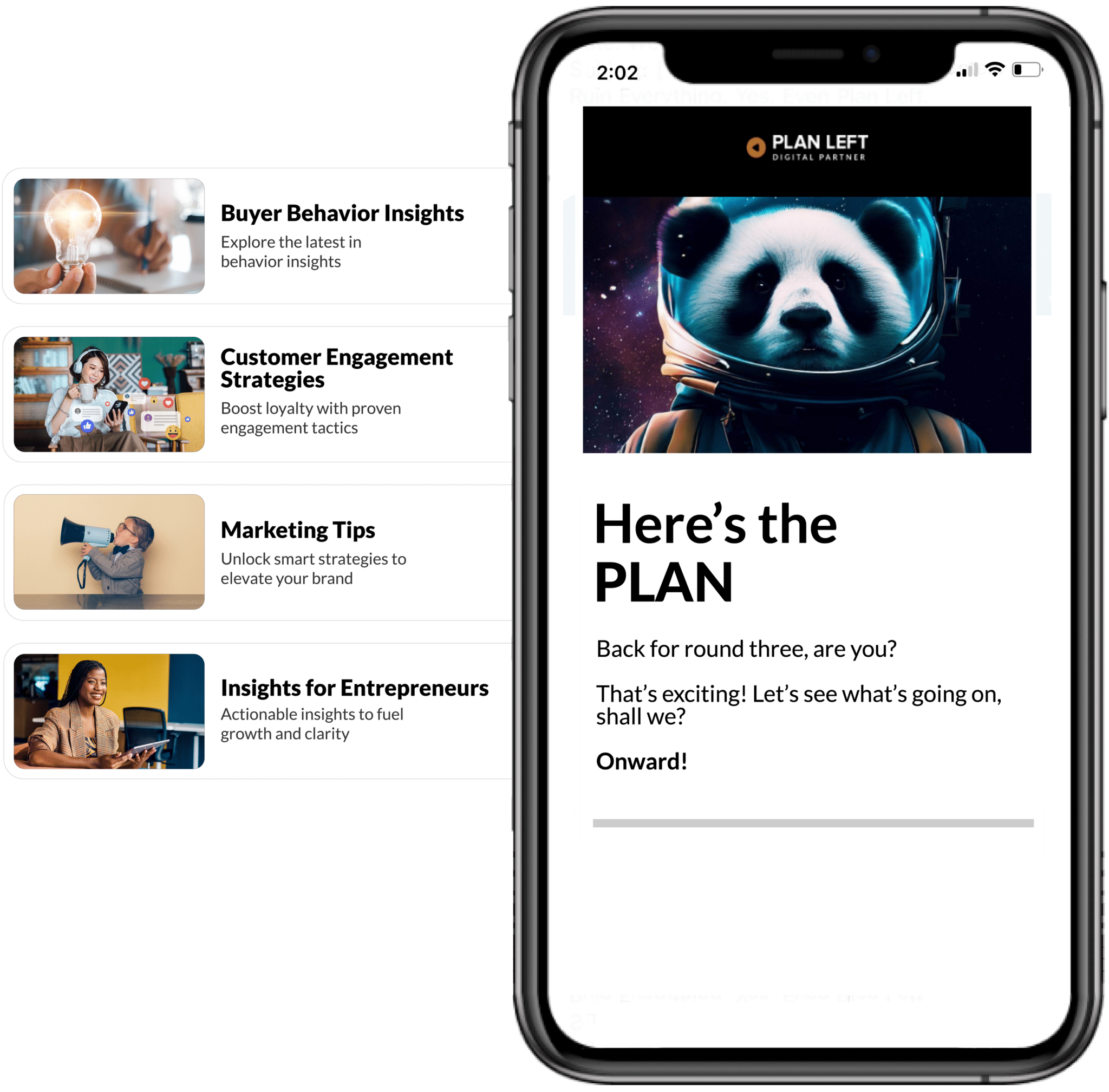
Why Competing on Price Is Killing Your Margins (And What to Do Instead)
When a prospect asks “how much do you charge?” and you feel your stomach tighten before answering, you’re experiencing the symptom of a positioning problem. That anxiety doesn’t come from your actual pricing—it comes from uncertainty about whether you can justify your rates to this particular person.
This uncertainty drives businesses into a destructive pattern: competing primarily on price because they can’t clearly articulate why they’re worth more.
The Price Competition Trap
Competing on price seems like a straightforward strategy. Lower your rates to be more competitive, attract more customers, make up margin with volume. This logic ignores several critical realities that make price competition far more expensive than the initial margin sacrifice suggests.
The True Cost of Being the Cheapest Option
Margin Erosion: Death by a Thousand Discounts
Price competition rarely stops at your initial discount. Once you’ve established yourself as the low-cost option, prospects expect those rates to be negotiable. “Your competitor quoted me 20% less” becomes a standard objection. Each negotiation chips away at already-thin margins, making it progressively harder to deliver quality results while maintaining profitability.
The math becomes brutal quickly. A 10% price reduction requires 11% more volume just to maintain the same revenue. A 20% reduction requires 25% more volume. These aren’t minor adjustments—they’re fundamental business model changes that assume unlimited capacity and perfect operational efficiency.
Customer Quality: Why Cheap Prices Attract Difficult Clients
Price-driven customers are typically the most demanding and least loyal. They chose you because you were cheap, which means they’ll leave when someone cheaper appears. They often undervalue your expertise, push back on recommendations, and demand excessive revisions or support. The relationship feels transactional because it is—you’re competing solely on price, not on the value you deliver.
These customers also generate poor referrals. When someone refers you because you’re “affordable,” they’re sending more price-sensitive prospects, perpetuating the cycle.
Brand Perception: The Value Signal You’re Sending
Price signals value in ways that extend far beyond individual transactions. Positioning yourself as the low-cost option tells the market that you’re not premium, not specialized, and not particularly differentiated. This perception is difficult to reverse. Once you’re known as the affordable alternative, attracting clients willing to pay premium rates requires completely repositioning your brand.
Why Businesses Default to Price Competition
The Differentiation Void
Most businesses compete on price not because they want to, but because they don’t know how to compete on anything else. When you can’t clearly articulate what makes you different from competitors, price becomes the only differentiator that’s easy to communicate. This default happens not from strategy but from a failure to develop meaningful positioning.
Fear of Losing to Cheaper Competitors
The fear of losing business to lower-priced competitors is legitimate—but it’s often misplaced. Yes, some prospects will always choose the cheapest option regardless of value. But ideal clients—the ones who appreciate expertise, value quality, and pay reliably—aren’t making decisions primarily on price. They’re evaluating whether you can deliver the transformation they need.
The Alternative: Strategic Brand Differentiation
What True Differentiation Looks Like
Real differentiation isn’t about having completely unique services—it’s about owning a specific position in your market that makes you the obvious choice for certain clients. This could be specialized expertise in a particular industry, a unique approach to solving common problems, exceptional results in specific applications, or a business model that aligns particularly well with certain client needs.
Differentiation works when it’s meaningful to your target audience, defensible based on your actual capabilities, and consistently communicated across all marketing touchpoints.
Case Studies: Brands That Win Without Being Cheapest
Consider companies like Apple, Patagonia, or Ritz-Carlton. None compete on price, yet all thrive because their differentiation is clear and valuable to their target audiences. This isn’t exclusive to large brands. Service businesses of all sizes successfully command premium pricing by clearly owning their unique position and communicating it consistently.
A boutique marketing agency might specialize exclusively in healthcare practices, developing deep expertise that generalist agencies can’t match. A graphic design firm might focus entirely on packaging for food brands, building a portfolio and knowledge base that justifies premium rates. These businesses don’t need to be the cheapest because they’re clearly the best fit for specific client needs.
The DiffBrand Framework: Finding Your Unique Position
Step 1: Identifying What Makes You Genuinely Different
Your differentiation already exists—the challenge is recognizing and articulating it clearly. Start by analyzing your most successful client relationships. What patterns emerge? What expertise have you developed? What results do you consistently deliver that competitors struggle with? What do clients value most about working with you?
This analysis often reveals differentiation you’ve been overlooking because it feels natural to you. The expertise or approach that comes easily might be exactly what sets you apart in the market.
Step 2: Understanding What Your Ideal Customer Actually Values
Differentiation only matters if your target audience cares about it. Being “fast” only differentiates you if your ideal clients value speed. Having “30 years of experience” only matters if your prospects see experience as critical. The key is aligning your genuine differentiators with what your ideal customers actively seek.
This requires actually talking to prospects and customers about their decision criteria, their frustrations with alternatives, and what would make someone an obvious choice for their business.
Step 3: Creating Cohesive Messaging That Communicates Your Value
Once you’ve identified meaningful differentiation, every marketing touchpoint should reinforce it. Your website, proposals, sales conversations, content, and client communications should consistently communicate your unique position and the value it creates. This consistency builds recognition and makes your differentiation memorable and credible.
Transitioning Away from Price Competition
Auditing Your Current Positioning
Before repositioning, honestly assess where you stand now. How do prospects currently perceive you? What prompts price objections? Where does your marketing emphasize price versus value? This audit reveals the gaps between how you want to be positioned and how the market currently sees you.
Communicating Value in Every Marketing Touchpoint
Shifting from price competition to value positioning requires changing how you talk about your work everywhere. Instead of leading with rates or packages, lead with transformation and results. Instead of listing features, articulate outcomes. Instead of comparing yourself to competitors on capabilities, own your unique position and explain why it matters.
Handling the “You’re Too Expensive” Objection
When prospects say you’re too expensive, they’re often saying they don’t yet understand the value clearly enough to justify the investment. Your response should revisit the transformation, quantify the ROI, and help them understand the cost of not solving this problem. If they still see your services as too expensive after understanding the full value, they’re likely not your ideal client—and that’s okay.
Trying to serve everyone by being the cheapest option serves no one well. You can’t deliver exceptional results at bottom-of-market pricing, and price-driven clients won’t appreciate the value even when you overdeliver.
Making Every Piece of Marketing Reinforce Why You’re the Obvious Choice
Brand Consistency Across Channels
Your differentiation needs to be evident across every channel and touchpoint. Website messaging, social media content, email communications, sales conversations, and client deliverables should all reinforce the same positioning. This consistency makes your unique value clear and memorable.
From Features to Transformation
The most powerful shift in positioning is moving from talking about what you do (features) to articulating what clients achieve (transformation). “We provide social media management” competes on price. “We build personal brands that attract premium clients” positions based on value.
Competing on Value, Not Price
The race to the bottom in pricing has no winners—only businesses with progressively thinner margins until they can’t sustain operations. Breaking free from price competition requires the courage to claim a differentiated position and the discipline to communicate it consistently.
When you compete on value rather than price, you attract clients who appreciate expertise, deliver results worth premium pricing, and build a business model that’s sustainable and profitable. Your differentiation might already exist in the unique way you solve problems, the specific expertise you’ve developed, or the exceptional results you consistently deliver. The work is recognizing it, articulating it clearly, and positioning your business accordingly.
The businesses thriving in your market aren’t the cheapest options—they’re the ones whose value is so clear that price becomes secondary to fit. That position is available to you, but it requires moving beyond the comfort of price competition and owning what genuinely makes you different.
Explore Latest Posts
Why Competing on Price Is Killing Your Margins (And What to Do Instead) When a prospect asks "how much do ... read more
December 25, 2025
The Hidden Cost of Marketing Agencies: Why Building In-House Capabilities Matters Marketing agencies solve an immediate problem: you need marketing ... read more
December 23, 2025
How to Know Exactly Which Marketing Activities Drive Results You're investing in marketing. Social media posts go out regularly. Email ... read more
December 18, 2025
Essential Strategies for Entrepreneurs
Get Actionable Business Insights & Marketing Tips
Our newsletter delivers real-world strategies from entrepreneurs who’ve been exactly where you are.
Sign up now for:
- Actionable growth strategies that work
- Insider tactics for attracting top talent
- Real-world case studies from successful founders
- Emerging tech trends that drive innovation
- Pragmatic marketing approaches for visionary leaders



